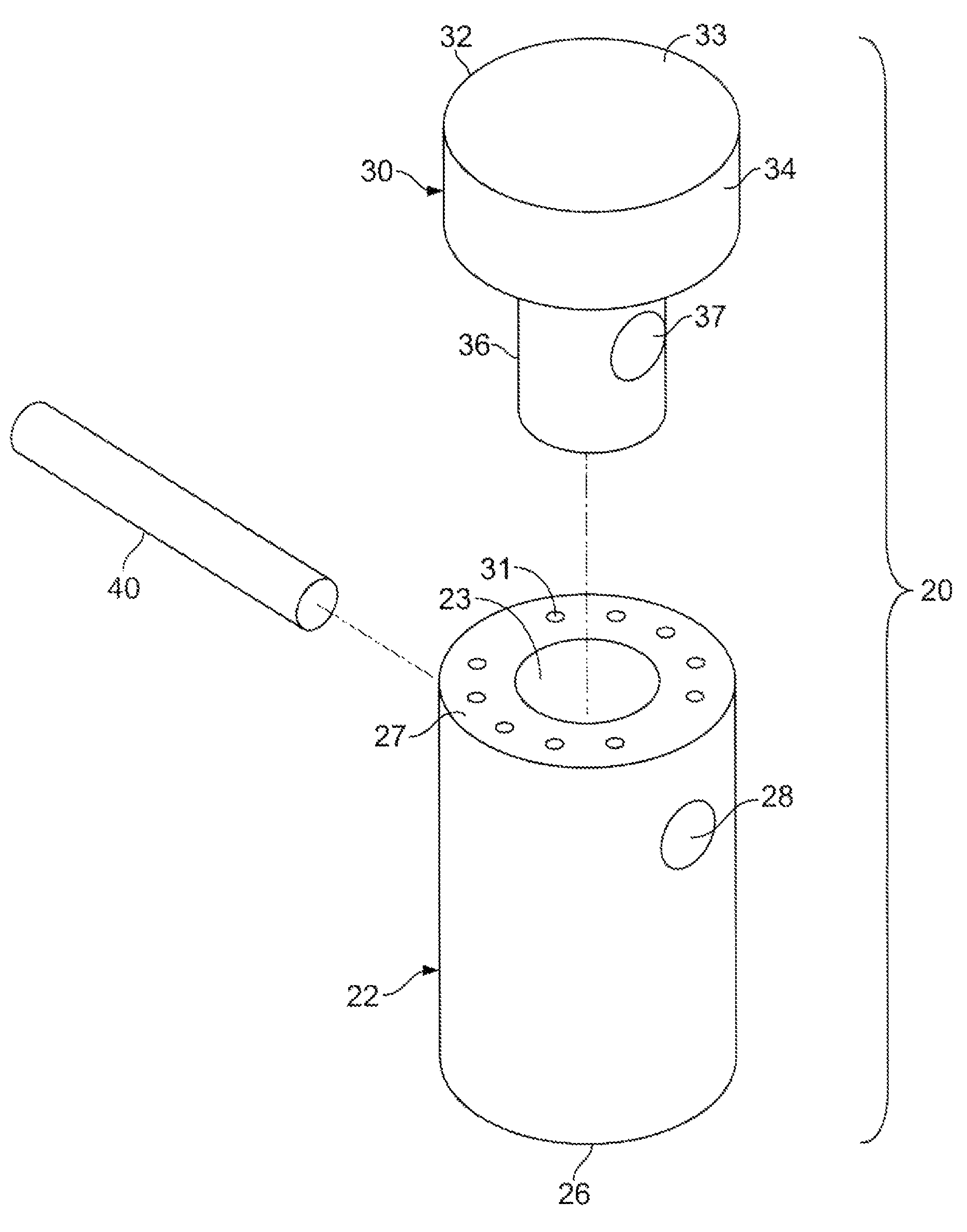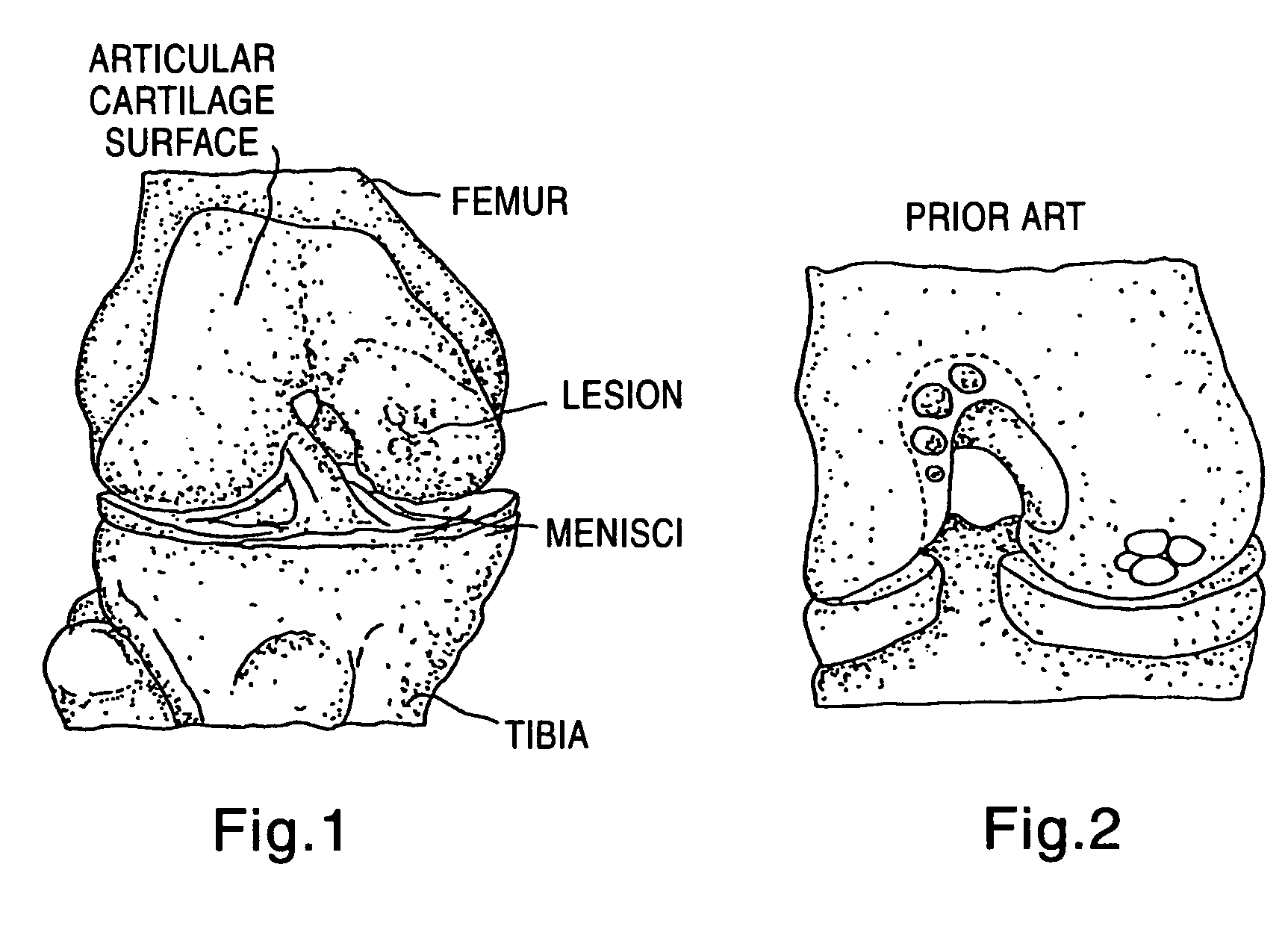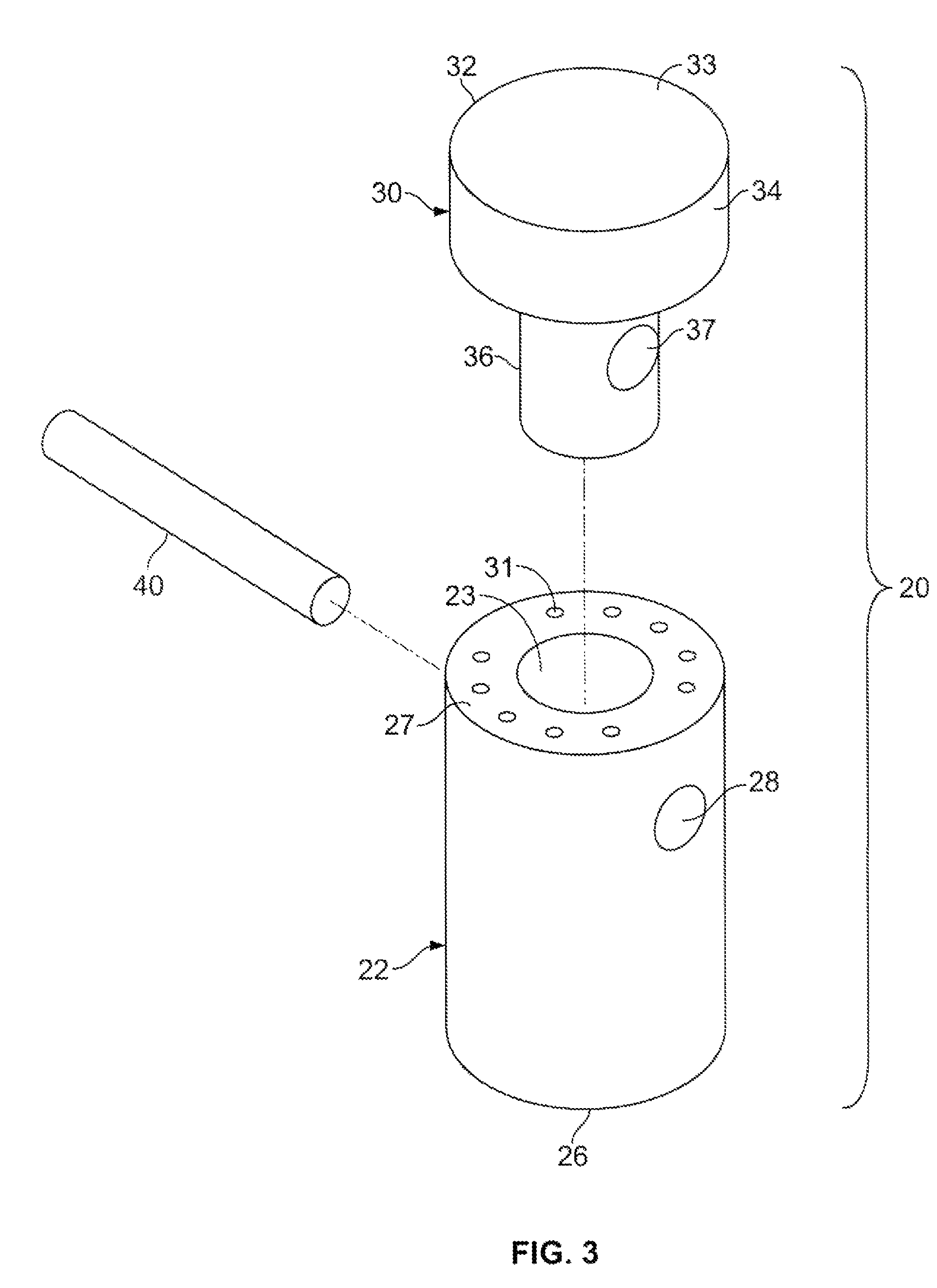Two piece cancellous construct for cartilage repair
a cartilage repair and cancellous technology, applied in the field of allograft cancellous bone implants, can solve the problems of articular cartilage lesions generally not healing, pain or severe restriction of joint movement, and limited hyaline cartilage regeneration, so as to achieve the effect of restoring normal function and being easily placed in the defect area
- Summary
- Abstract
- Description
- Claims
- Application Information
AI Technical Summary
Benefits of technology
Problems solved by technology
Method used
Image
Examples
Embodiment Construction
[0042]The term “tissue” is used in the general sense herein to mean any transplantable or implantable tissue, the survivability of which is improved by the methods described herein upon implantation. In particular, the overall durability and longevity of the implant are improved, and host-immune system mediated responses, are substantially eliminated.
[0043]The terms “transplant” and “implant” are used interchangeably to refer to tissue, material or cells (xenogeneic or allogeneic) which may be introduced into the body of a patient.
[0044]The terms “autologous” and “autograft” refer to tissue or cells which originate with or are derived from the recipient, whereas the terms “allogeneic” and “allograft” refer to cells and tissue which originate with or are derived from a donor of the same species as the recipient. The terms “xenogeneic” and “xenograft” refer to cells or tissue which originates with or are derived from a species other than that of the recipient.
[0045]The present inventi...
PUM
| Property | Measurement | Unit |
|---|---|---|
| diameter | aaaaa | aaaaa |
| thickness | aaaaa | aaaaa |
| size | aaaaa | aaaaa |
Abstract
Description
Claims
Application Information
 Login to View More
Login to View More - R&D
- Intellectual Property
- Life Sciences
- Materials
- Tech Scout
- Unparalleled Data Quality
- Higher Quality Content
- 60% Fewer Hallucinations
Browse by: Latest US Patents, China's latest patents, Technical Efficacy Thesaurus, Application Domain, Technology Topic, Popular Technical Reports.
© 2025 PatSnap. All rights reserved.Legal|Privacy policy|Modern Slavery Act Transparency Statement|Sitemap|About US| Contact US: help@patsnap.com



